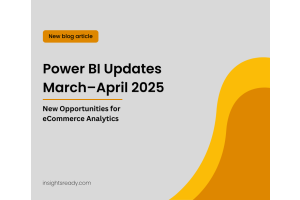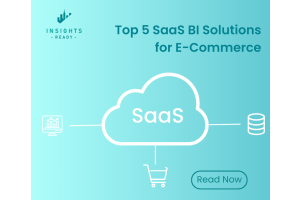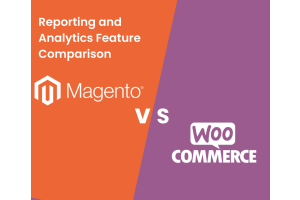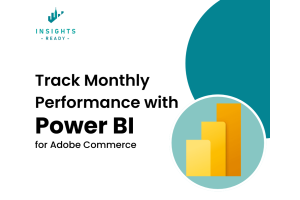We use cookies to improve your experience on our website and for marketing. Private Policy.
Data Analysis in eCommerce | How To Guide

What is Data Analysis in eCommerce?
Everybody knows that in order to make an important decision in business all the information should be analyzed carefully and thoroughly. From the very childhood years we were taught that to make your decision sound, you need to back up your judgements and final verdicts by real and proven facts.
In 2022 modern technologies, bi tools , artificial intelligence and automated CRM platforms have made the data gathering and analysis even more complicated. It would only seem that all this technological power for data analysis is for our convenience and will be a time saving thing.
But, when it comes to the data gathering and analysis processes, be it for your business venture or a company you are working for, you may simply be confused about choosing the right tool for the analysis.
Of course, choosing from all these abundance of different add-ons, extensions, programs and other solutions BI market is offering today may be a hard and time consuming process. Research and analysis are an easy deal for those who use the Magento platform integrated with Power BI analytical tools with Power BI analytical tools.
But, what if your store has another popular CRM? What to start from? How to gather and cluster the data with ease and succeed? Here, in this article, we will explain the process of data analysis in eCommerce in three simple steps.
<2>Step #1 - Determining the Objectives of Your ResearchThe first thing a merchant should do is to determine the objective of his or her analysis. Let’s imagine you are selling household equipment online. Your business is going great, you have a huge base of returning customers and the income you receive suits you too. But, after a couple of months, you have been noticing that a competitor of yours began to gain momentum.
There is no reason to hesitate - you need to do a thorough and deep analysis of your competitors right away!
So, in the situation above, the main objective of your analysis will be to determine how to overrun that particular competitor. What tools do you need for your analytical research? Successful business owners tend to use Power BI interactive reports . The analysis and data researching process comes with ease when colorful and comprehensive visualization appears.
Step #2 - Choosing the Tool for Data Analysis
Once the analyst has determined what data he or she needs and how to collect it, the time comes to choose the right tool. To tell the truth, today we have plenty of user-friendly and powerful tools for this very purpose.
But, if you need any assistance or have any customized or very precise and specific requirements, contact us, and we will develop a data analysis tool that will perfectly suit your requirements.
Step #3 - Data Gathering Process
Once the goal of your analysis is set, you need to collect and organize the relevant data. We recommend researching both qualitative and quantitative data. Each of the data is mainly divided into three categories, namely: first, second and third party data.
1. First Party Data
First-party data is basically collected directly from the customers. This may be the information collected through the company's customer relationship management system or transaction tracking data as well. Or you may decide to make a survey using popular tools for that purpose. The helpful thing is the data visualization. You may try how it works downloading our Magento Power BI sample reports. .
Wherever data is generated, it is usually organized and structured. The first party data may include, but not limited to: subscription data, social data, info from interviews & focus groups, consumer satisfaction surveys, etc. This data is useful for predicting your future business models and getting a full picture of your target audience.
2. Second Party Data
This is primarily the first-party data but collected by other companies. It may be available directly from the company or through the private market. It may include data from sources such as first-party data, for example, website activity , customer surveys, social media activity, and more.
This data can be used to reach new audiences and predict customers buying behavior. The advantage is that it is usually structured and reliable. Moreover, this piece includes the data from your competitors too. The easiest way is to use the Power BI extension for Magento. .
3. Third Party Data
In the world of eCommerce, this sort of data is collected and shared from multiple sources via a third party organization(s). This is a large mass of unstructured and uncategorized info. It is mainly collected by many companies and even governmental organizations to create industry reports and conduct marketing analysis and research .
Examples of this data are: email & postal addresses, telephone numbers, social network profiles, purchase history and browsing activity of customers.
Considering all the sources and types of the data you have gathered and analyzed, you will finally see what is going on in your company and to what you and your colleagues need to pay more attention.
We hope data analysis in eCommerce has now become more easy and comprehensive for you than was before.







